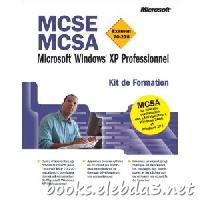📘 قراءة كتاب الموسوعة الشبكية - Networking Encyclopedia MCSE أونلاين


كتاب ضخم ومتميز في شرح الMCSE بشكل مستفيض من تنصيب الويندوز 2000 إلى كل شيء عن الشبكات - كتاب ينصح به.
كتاب ضخم ومتميز في شرح الMCSE بشكل مستفيض من تنصيب الويندوز 2000 إلى كل شيء عن الشبكات - كتاب ينصح به.
إعداد : وليد عوده
"Datacom" redirects here. For other uses, see Datacom (disambiguation).
Network science
Internet_map_1024.jpg
Theory
Graph Complex network Contagion Small-world Scale-free Community structure Percolation Evolution Controllability Graph drawing Social capital Link analysis Optimization Reciprocity Closure Homophily Transitivity Preferential attachment Balance theory Network effect Social influence
Network types
Informational (computing) Telecommunication Transport Social Scientific collaboration Biological Artificial neural Interdependent Semantic Spatial Dependency Flow
Graphs
Features
Clique Component Cut Cycle Data structure Edge Loop Neighborhood Path Vertex Adjacency list / matrix Incidence list / matrix
Types
Bipartite Complete Directed Hyper Multi Random Weighted
Metrics Algorithms
Centrality Degree Betweenness Closeness PageRank Motif Clustering Degree distribution Assortativity Distance Modularity Efficiency
Models
Topology
Random graph Erdős–Rényi Barabási–Albert Fitness model Watts–Strogatz Exponential random (ERGM) Hyperbolic (HGN) Hierarchical Stochastic block model Lancichinetti–Fortunato–Radicchi benchmark
Dynamics
Boolean network agent based Epidemic/SIR
Lists Categories
Topics Software Network scientists
Category:Network theory Category:Graph theory
v t e
Operating systems
Operating system placement.svg
About this image
Common features
Process management Interrupts Memory management File system Device drivers Networking Security I/O
v t e
A computer network, or data network, is a digital telecommunications network which allows nodes to share resources. In computer networks, computing devices exchange data with each other using connections between nodes (data links.) These data links are established over cable media such as wires or optic cables, or wireless media such as WiFi.
Network computer devices that originate, route and terminate the data are called network nodes.[1] Nodes can include hosts such as personal computers, phones, servers as well as networking hardware. Two such devices can be said to be networked together when one device is able to exchange information with the other device, whether or not they have a direct connection to each other. In most cases, application-specific communications protocols are layered (i.e. carried as payload) over other more general communications protocols. This formidable collection of information technology requires skilled network management to keep it all running reliably.
Computer networks support an enormous number of applications and services such as access to the World Wide Web, digital video, digital audio, shared use of application and storage servers, printers, and fax machines, and use of email and instant messaging applications as well as many others. Computer networks differ in the transmission medium used to carry their signals, communications protocols to organize network traffic, the network's size, topology, traffic control mechanism and organizational intent. The best-known computer network is the Internet.
مذكره في الشبكات
دروس شبكات عملي
كتب شبكات عملي
شرح الشبكات pdf
شبكات الحاسب عملي
كتب شبكات الحاسوب pdf
دورة شبكات للمبتدئين pdf
طرق توصيل الشبكات
كتب شبكات سيسكو عربي pdf
سنة النشر : 2007م / 1428هـ .
حجم الكتاب عند التحميل : 25.9 ميجا بايت .
نوع الكتاب : pdf.
عداد القراءة:
اذا اعجبك الكتاب فضلاً اضغط على أعجبني و يمكنك تحميله من هنا:

شكرًا لمساهمتكم
شكراً لمساهمتكم معنا في الإرتقاء بمستوى المكتبة ، يمكنكم االتبليغ عن اخطاء او سوء اختيار للكتب وتصنيفها ومحتواها ، أو كتاب يُمنع نشره ، او محمي بحقوق طبع ونشر ، فضلاً قم بالتبليغ عن الكتاب المُخالف:
 قبل تحميل الكتاب ..
قبل تحميل الكتاب ..
يجب ان يتوفر لديكم برنامج تشغيل وقراءة ملفات pdf
يمكن تحميلة من هنا 'http://get.adobe.com/reader/'


 منصّة المكتبة
منصّة المكتبة 